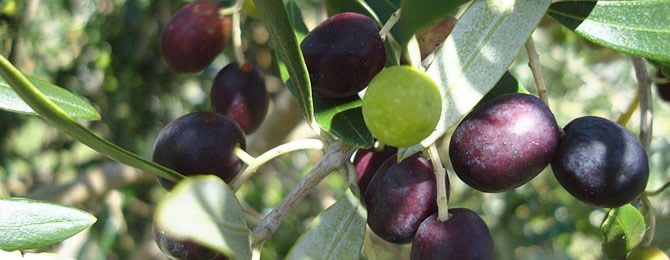Oils and Fats Update
Laurence Eyres FNZIFST
November 2021
Obituary and tribute to Professor Frank Gunstone
We are so sorry to announce the passing of Frank D. Gunstone at 97years old. He was a prominent AOCS member, author, scientist and mentor to many students and co-workers.
When this author entered the oils and fats Industry in 1974, Frank was already a legend. We had him as a plenary speaker at our international conferences where he was hailed as a powerful and leading figure in the world of lipids. He was also an excellent human being with a dry and kind sense of humour (A Mancunian).
He was born in Manchester, did his research at Liverpool under Hilditch and then moved to St Andrews, Scotland as professor of Chemistry.
I never found out whether he was a golfer or not.
His classic textbooks on the Chemistry of fats and oils are compulsory reading for anyone in this field. The Chemistry of Oils and Fats (second edition 2004).
The Lipid Handbook, which Professor Gunstone authored with fellow AOCS members John Harwood and Albert Dijkstra, set the industry standard for those working in lipid science and technology.
In later years Frank edited the journal Lipid Technology and did his usual superb job.
To learn more about the impact Professor Gunstone had on those around him and the field of lipid science, read this open-access dedication written by Marcel S. F. Lie Ken Jie in the European Journal of Lipid Science and Technology.
It was a privilege and honour to have known Frank and he will be mourned by many.
The Gunstone team around 1966. From left: Mrs. Linda Wade, Marcel Lie Ken Jie, Harry Conacher, Frank Gunstone, W.W. Christie, Richard Powell, Gill Taylor, and David Hoyes.
Photo taken from https://doi.org/10.1002/ejlt.201400465
Margarines and Spreads
Just to recap, Margarine was invented in France by Hippolyte Mèges-Mouries in response to Napoleon III’s call for a cheap alternative to butter for French workers and for his armies in the Franco-Prussian war. The first margarine, consisting of beef tallow churned with milk, was patented in 1869. Since then, there has been a lot of change globally with the ongoing battle with butter and innovation techniques covering fat content, ingredients, flavour and nutritional claims.
In Australasia margarines at retail level have been predominantly replaced by spreads. FSANZ defines margarines as having to contain a minimum of 80% fat whilst spreads can be any fat content. Most palatable spreads have 65-70% fat of the total product (with the balance water). Margarines are an expanding market worldwide due to large scale commercial, lower cost, growth of bakery and confectionery markets, and seasonal independence. The fatty acid composition solid fat content consistency and melting point of the fats used in margarines determined the end properties. Issues around the use of fats in spreads revolve around trans fats produced by elevated temperatures, such as deodorization. There are other issues including trans fats from hydrogenation and the inclusion of colours, vitamins and functional ingredients. There is a good recent review of the history of margarines and spreads, discussing some of these trends.
The reference was supplied by Dr. Graham Eyres (Otago)
Food Research International, Volume 147, September 2021, 110486
High fat diets and heart disease
That a high-fat diet increases a person’s risk for heart disease has long been known, but researchers now think they understand the process behind this link.
A high-fat diet disrupts the biology of the gut’s inner lining and the bacteria that help break down food, producing a substance that, while involved in the digestive process, may contribute to the development of heart disease, a study published Thursday by the journal Science found.
Experiments in animals as part of the research revealed that the intestines and gut microbiome, or the bacteria lining the walls of the intestines, play a key role.
“Right now, roughly 40% of the U.S. population is obese, and that percentage is predicted to climb,” said Byndloss, an assistant professor of pathology, microbiology and immunology at Vanderbilt University Medical Center in Nashville.
“Our research has revealed … how diet and obesity can increase risk of cardiovascular disease by affecting the relationship between our intestines and the microbes that live in our gut,” she said.
Epithelial cells lining the intestines and gut microbes have a mutually beneficial relationship that promotes a healthy gut environment.
A Western-style, high-fat diet is often associated with cardiovascular disease, and one explanation for this is that members of the gut microbiota catabolize dietary choline into trimethylamine (TMA) which is absorbed in the intestine and oxidized in the liver to trimethylamine N-oxide (TMAO), a metabolite that promotes atherosclerosis
SCIENCE•13 Aug 2021•Vol 373, Issue 6556•pp. 813-818•DOI: 10.1126/science. aba3683
Sterolife- a novel sterol ester for baking
Researchers from KU Leuven Campus Kulak Kortrijk have succeeded in developing an unsaturated fat that is solid at room temperature. “Our product, which we have named Sterolife, is an odourless and colourless solid fat,” says Dr Eva Daels of the Food & Lipids research group. “With these properties, Sterolife can reduce the saturated fat content of products without sacrificing quality and texture.”
Sterolife is made from plant sterols. These substances are naturally present in various vegetable products such as vegetables, fruit, nuts and grains, albeit in small amounts.
“The use of plant sterols offers environmental and sustainability benefits. These substances can be found in by-products of existing production processes,” explains Professor Imogen Foubert, promoter of the research project. “That is in stark contrast to the production of palm oil, the most consumed fat in the world. Production takes place exclusively in tropical areas and is accompanied by deforestation of rainforests, loss of biodiversity and huge CO2 emissions.”
It is our opinion that this will not lead to a major commercial success due to limited raw material and cost. Another major influence is when dealing with sweet baked goods, are people really concerned about nutrition? My experience says no, not at all.
Lipids in bread and other baking activities
Lockdown globally has initiated a great deal of effort into home baking. There is a huge growth in the preparation of sourdough bread much to the the derision of several satirists. Commercial bakers have access to specialty fats and emulsifiers which are a hidden market for the consumer. Key emulsifiers for bread include diacetyl tartaric acid esters of monoglycerides (DATA esters) and sodium stearoyl lactylate (SSL). These can be found formulated in several popular home yeast/improver mixes. Fat and emulsifiers whilst a minor part of the bread formulation have a massive effect on volume and texture of the baked bread.
During lockdown the home baking of cakes,muffins and slices will have increased enormously but people still like to get their sweet goods from their favourite take-out coffee shop so commercial take-up of these products has grown immenseley.Despite academic claims about substitutes for fat based emulsifiers,the traditional products like polyglycerol esters and lactylated products still predominate.
NZ Olive oil-a good year
The recent competions for Olive oils held in New Zealand found that this years production are virtually all of high quality.
Oliveti competition held outside in Kumeu found no trouble awarding numetous Gold and Silver medals.
Likewise the ASB A&P Easter Show, found a similar trend for excellence amongst the entrants.
https://aucklandaandp.co.nz › awards
Olives NZ had 165 entrants and awarded numerous Gold medals.
https://www.olivesnz.org.nz › awards
The message is clear, for quality taste and enjoyment purchase NZ certified olive oils.
A footnote for the analysis and fatty acid composition of lipids.
I have recently become involved in the discussion with Codex for the fatty acid ranges for avocado oil. This started off a look at analyses compiled over the last 40 years.
In 1974 we published a review on the preparation of fatty acid methyl esters for gas chromatography analyses and published a useful table.
This has needed to be updated many times over that time and there is a summary spreadsheet on our website.
Eyres, L. Chemistry in New Zealand,(1979),December, pp 237-239





